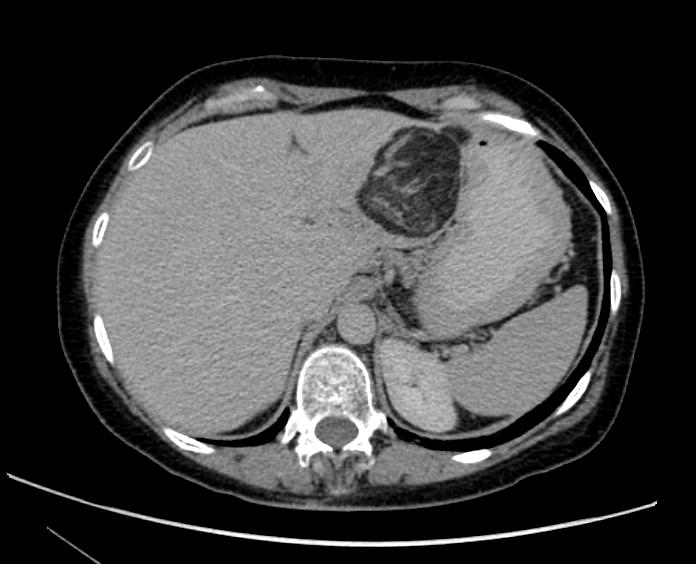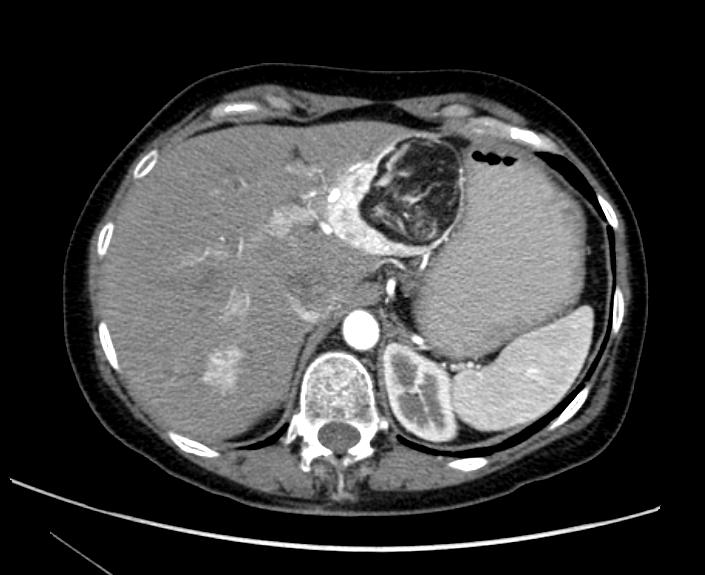Angiomyolipoma CT
|
Angiomyolipoma Microchapters |
|
Diagnosis |
|---|
|
Treatment |
|
Case Studies |
|
Angiomyolipoma CT On the Web |
|
American Roentgen Ray Society Images of Angiomyolipoma CT |
Editor-In-Chief: C. Michael Gibson, M.S., M.D. [1] Associate Editor-In-Chief: Cafer Zorkun, M.D., Ph.D. [2]
Overview
CT Scan
Most lesions involve the cortex and demonstrate macroscopic fat (less than -20 HU). When small, volume averaging may make differentiation from a small cyst difficult.
It is important to realise that a proportion of angiomyolipomas are fat-poor. This is especially the case in the setting of tuberous sclerosis, where up to a third do not demonstrate macroscopic fat on CT 6. Calcification is rare.
Demonstration of fat in renal tumor is virtually diagnostic of angiomyolipoma. Most small lesions are asymptomatic and incidental findings on images. The fat density of the tumour on CT is pathognomonic.
CT images demonstrate a large kidney angiomyolipoma
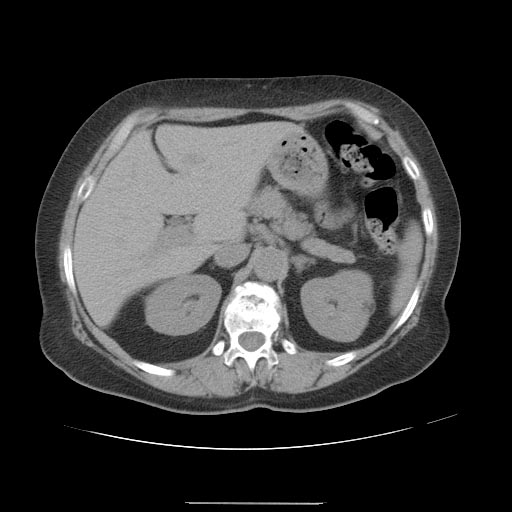
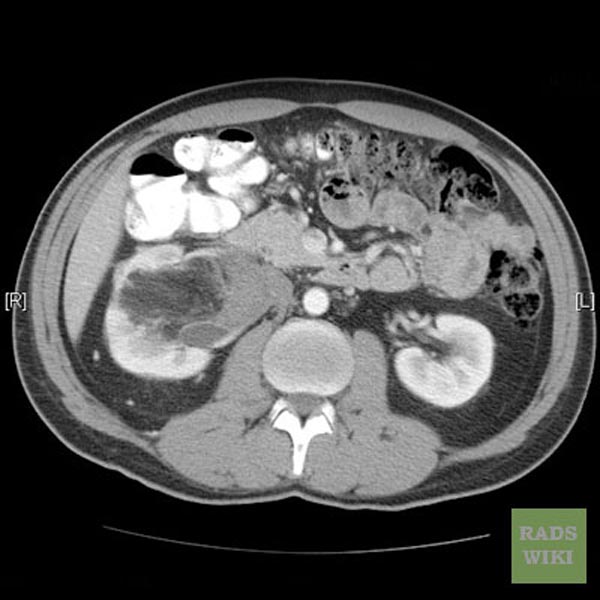
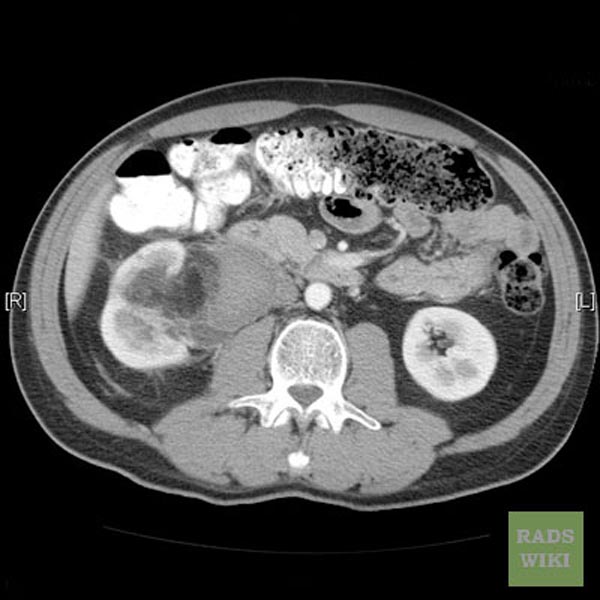
CT images demonstrate a large liver angiomyolipoma
